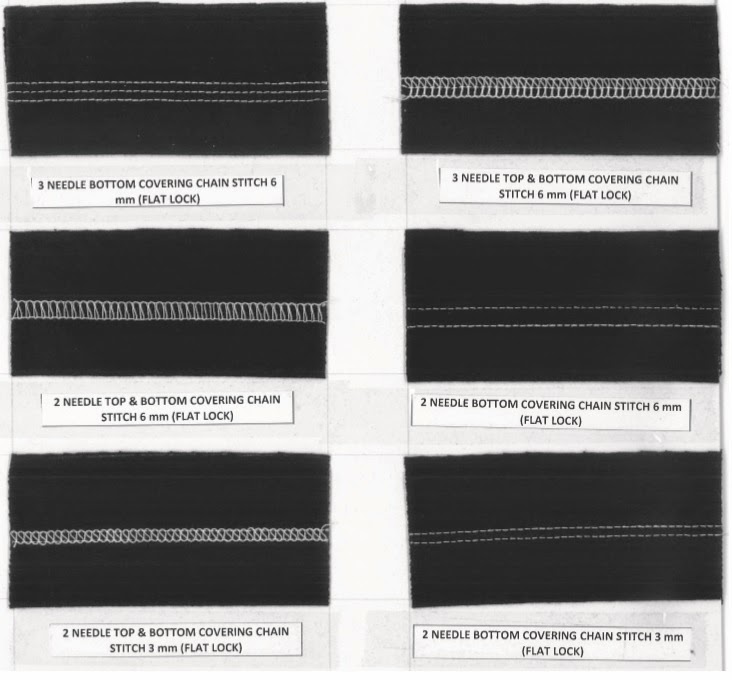To know the Commercial and Terms of Payment is very important to run any business. Specially which business mainly done Internationally.
Today I am going to published some Terms of Payment which is very essential for apparel business.
TERMS OF PAYMENT
Documents Against
Acceptance (D/A)
The buyer is allowed to make payment for the goods on
credit, as agreed between him and the seller. Payment for the merchandise is
commonly 60 or 90 days after acceptance of documents. The buyer gains the
advantage of not having to pay for the goods for a period of time after
accepting the documents. The supplier bears some risk because he will not
receive payment until a specified period after the documents and titles to the
merchandise have been accepted.
Documents Against
Payment (D/P)
The supplier agrees to release any documents referring to
the transfer of title for the merchandise upon payment. Since the goods are
produced and shipped before the supplier tenders the required documents for
payment, there is some risk to the supplier for demurrage charges if the buyer
does not accept the documents and title to the goods.
Open Account
This method of payment does not involve the services of a
bank, but is based upon an agreement between the supplier and the buyer. The
buyer has no legal obligation to pay the supplier and payment is normally made
directly to the supplier. The supplier bears some risks as the goods and
documents are usually delivered to the buyer before payment is made.
Letter of Credit
(L/C)
A letter of credit (also known as documentary credit) is a
document issued by a bank on behalf of an applicant (the buyer) undertaking to
make payment to a beneficiary (the seller) up to a stated amount of money,
within a prescribed time limit and against stipulated documents.
There are usually two banks involved in a letter of credit
operation. The issuing bank is the bank of the buyer and issues the credit; the
advising bank, usually located in the seller's country, is the bank through
which the advising bank sends the credit to the beneficiary.
Types of credit:
There are three common types of credit: revocable,
irrevocable, and irrevocable and confirmed
Revocable credit:
this type of credit can be amended or cancelled by the applicant without any
prior warning or notice to the beneficiary. More risks are involved for the
seller (the beneficiary) as he will then have to deal directly with the buyer
to obtain payment. However the buyer has more flexibility.
Irrevocable credit:
this type of credit can be amended or cancelled only with the agreement of all
parties concerned. It also represents a definite undertaking by the issuing bank
to pay provided that the stipulated documents are presented and that the terms
and conditions of the credit are complied with.
Irrevocable and
confirmed credit: this type of credit involves the undertaking of the
advising bank in addition to that of the issuing bank; it means that the
issuing bank requests a second bank to add its own confirmation to the credit
so that the confirming bank is responsible to make payment if the issuing bank
fails to pay the beneficiary.
A letter of credit should usually stipulate a requirement
for the following documents:
Bill of lading
Copy of the certificate of
Origin commercial invoice
Export licence
Packing list
Commercial Invoice
A commercial invoice is a business document which records
the sale of goods or services between two parties, and by which the seller
informs the buyer of the amount to be paid for the goods. Usually, the original
and four copies are stipulated in the LIC.
A commercial invoice
normally includes the following information:
Date and authorized signature
The correct name and address of both buyer and seller (or
the name of the consignee if the goods are not consigned to buyer)
A detailed description of the merchandise purchased
strictly corresponding with the description given in the letter of credit,
along with quantity, unit price, and total price, all deductions and additional
charges included in the price
Weight of the goods, number of packages, any identifying
shipping marks, any import license number, contract number or any other details
requested and stipulated in the LIC
Terms of delivery and payment (FOB, CIF, C&F)
The name of the issuing bank and the letter of credit
number
The port of entry for which the merchandise is destined
The type of currency and rate of exchange
(Collected and Edited)
----------------------------------
Thanks & Best Regards
Thanks & Best Regards
Enamul Haque Bipul
E-mail: ehbipul@gmail.com
Skype: bipul1984
Mob: +8801717264756
.



